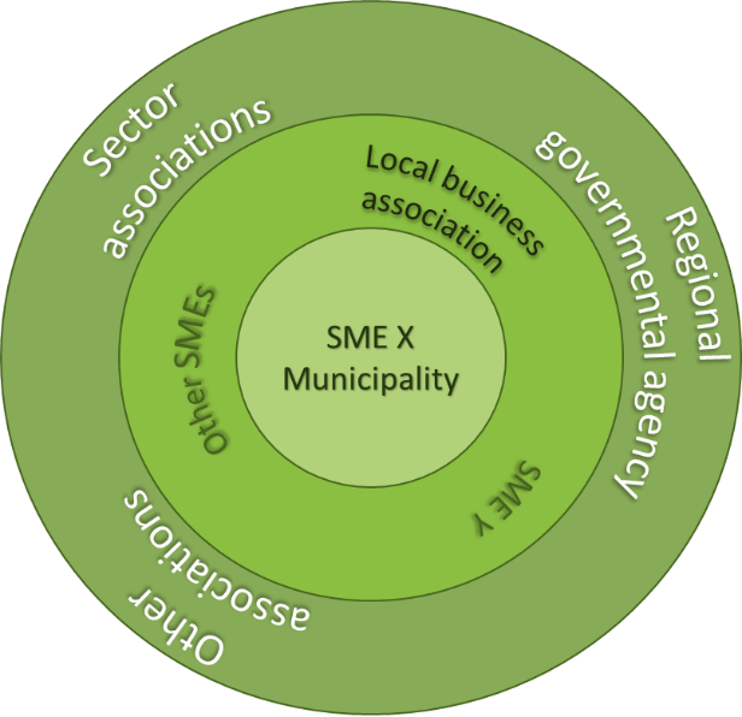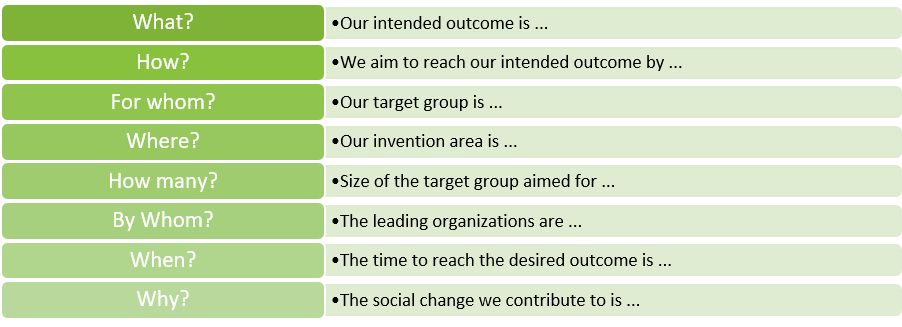Recover your password.
A password will be e-mailed to you.
Explore
Define scope and organize stakeholders
B1. Forming an Energy Working Group
You form a core group of persons who can support you in the development of the collective. The group could consist of representatives from SME frontrunners, energy associations, or other enthusiastic stakeholders.

B2. Setting your ambition
You set and formulate the ambition and focus of your local energy collective – together with your Energy Working Group – and with the needs and priorities of the SME cluster in mind. The ambition level can vary widely between collectives and be about a sustainable business park, net-zero climate impact, increasing energy efficiency or reaching a specific number or amount of energy measures.

B3. Defining services and activities
You tailor the services and activities of the collective to the needs of the SMEs. The focus varies between collectives and will develop, as the energy maturity of your SMEs grows. The offer is summarized in a value proposition, which should convince SMEs of the added benefit of participating in the collective – that they are better off with the services and activities of the collective than without. It is thus important for the motivation of the SMEs.
B4. Motivationg SMEs to participate
You get to know the SMEs and highlight how the services and activities offered – your value proposition – answer to the specific challenges and business values of the individual SMEs that you contact. Be prepared to add detail on what they get and what is expected from them. Ask questions and go back and adapt your offer if needed.
B5. Involving the right stakeholders
You identify and mobilize relevant stakeholders, such as Energy Service Suppliers or public organizations, that may play a role in the local energy collective and develop your network. The network stakeholders may be more or less involved, and in different roles. Which stakeholders you should try to involve depend on the needs you see and the resources you, and others, have access too.
B.6 Developing the organizational structure
You develop a long-term structure for the organization, ownership, membership and revenue flows of your collective. For less mature energy collectives, free participation for the SMEs might be preferable – as the collective evolve so does organizational structure, into more formal commitments. The ultimately chosen legal form will play a central role in the implementation of the activities, managing costs, and revenues, and is the point of contact for the SMEs and possibly for (external) financiers.